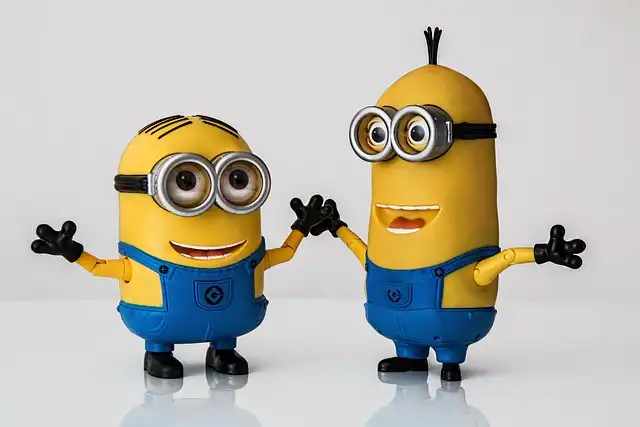Animation: Emotions, Technology, and the Human Touch – Victor Ens Interview

Animator Victor Ens discusses balancing technology with human emotion in animation, highlighting his work on Klaus and The Breadwinner. He emphasizes storytelling, mentoring, and the importance of emotional depth.
I see animation as a medium that gives an artist with enormous opportunities to communicate a broader series of emotions that resonate with younger and adult audiences alike. To make use of these opportunities originally, an animator should regulate practical skills that are rooted in comprehending basic animation concepts, examining classic jobs, as well as the musician’s individual experiences. And these principles are learned in a hands-on, functional means, typically through experimentation. While technical quality and total high quality play a critical duty in forming the impression the animation movie makes on the audience, telling a compelling story requires more than that.
After being successful with your job, getting numerous honors, and accumulating numerous sights on platforms like Netflix, Amazon Prime, and Apple TV, what do you plan for the following chapter of your job? What inspires you to expand right into tale advancement and develop your very own movies?
The Future of Animation: Storytelling and Personal Films
While adopting brand-new technologies plays an essential function in modern animation movies, as digital devices, such as showy CGI and VFX-laden animation open brand-new creative opportunities, an additional important trend is creating in parallel: a popular appreciation for handcrafted, special, and genuine computer animation that needs human touch and can not be attained via pure technical quality. This trend attracts much more attention from the developer and their audiences with the present rise of generative AI. We reviewed these patterns and the state of modern-day animation with Victor Ens, a personality animator and storyboard musician with over twenty years of experience, including work on prize-winning titles such as The Breadwinner (2017) or Klaus (2019 ), along with collaborating with acclaimed directors consisting of Sylvain Chomet, Nora Twomey, and Sergio Pablos and working at renowned studios, such as Studio 352, SPA Studios.
In Klaus, one of my objectives was to locate refined methods to communicate the facility feelings and interactions of the characters, such as pain mixed with rage initially of Klaus’s story or the contrast between Klaus and an additional character, Jesper, through their motions and movements, that make the dialogue really feel alive. Typically, it needed experimenting with several versions and trying out various perspectives, but the initiative always pays off.
Communicating Emotion Through Animation: The Example of Klaus
It is likewise crucial to keep in mind that in such projects, fixing innovative problems is indivisible from really functional and industrial jobs. In the last stages of functioning on Klaus, when gathered hold-ups and deadline pressures started to endanger the movie’s release routine, I took on a remarkable work to make certain timely shipment, much exceeding regular computer animation output. In the last three months alone, I computer animated 93 secs of finished animation, which stands for a 55% efficiency increase compared to the industry average of 45-60 seconds over the same period.
Among the most renowned applications of your technique is your work as a Monitoring Animator on Klaus, where you directly computer animated a significant portion of the titular character and helped form its layout, psychological array, and activity style in cooperation with the director. Your immense workload not only led to fulfilling all the target dates, however was important to the film’s success, illustrated by multiple nominations including election for Academy Honors as Best Computer Animated Feature, as well as 97% ranking on Rotten Tomatoes. What were the innovative and production challenges you faced, and exactly how did you approach them?
Balancing Creativity and Production in Animation
That is an impressive quantity of job! And the critical acclaim received by Klaus is a living evidence of exactly how your approach assists animators to add emotional deepness to their personalities and establish a foundation for producing animations that resonate with the audience on several levels. Along with your own animation work, you have actually mentored more youthful animators as a Managing Animator or Senior Animator in your more current projects, such as The Breadwinner (2017) and previously mentioned Klaus (2019 ). What are the most important lessons you attempt to hand down to arising animators?
While embracing new innovations plays a critical duty in modern animation movies, as digital devices, such as fancy CGI and VFX-laden animation open brand-new creative possibilities, another essential fad is establishing in parallel: a prominent admiration for handcrafted, special, and genuine computer animation that requires human touch and can not be accomplished through pure technological quality. We reviewed these patterns and the state of modern animation with Victor Ens, a character animator and storyboard musician with over 20 years of experience, including job on acclaimed titles such as The Income Producer (2017) or Klaus (2019 ), as well as teaming up with well-known directors including Sylvain Chomet, Nora Twomey, and Sergio Pablos and working at prominent workshops, such as Studio 352, Medical Spa Studios.
Mentoring Emerging Animators: Key Lessons
The work with these tasks instructed me to locate the best ways to communicate sensations and feelings, while staying on top of premium quality standards and tight due dates. Every motion and expression, nonetheless small it may be, lugs its definition, reveals the emotional depth, and plays its part in shaping the rhythm of the story. In each of these animations, I concentrated on telling an engaging, emotional story via tiny motions, details, and various other means of expressing the genuine feelings of the characters. The Illusionist informs the tale of an illusionist that visits an isolated Scottish community and comes across a young girl who thinks him to be a genuine illusionist. The tale of Song of the Sea is influenced by Irish folklore. Both works are deeply rooted in human feelings and personal stories, and I always strive to discover effective ways to share them via computer animation.
Primarily, I intend to show them sensible means to attain better outcomes both regarding the artistic high quality of their job and its production worth. Today’s computer animation sector has actually ended up being a very affordable area, with boosting needs for any person that wishes to build a profession in it. Aiming animators require to find out how to balance their innovative vision with the real-life scenarios they are functioning in, such as the demand to fulfill a due date or work as component of a team.
While maintaining up with this criterion can be limited in industrial atmospheres, which need animators to work under limited deadlines, I do my ideal to preserve them and teach the animators I manage to do so, finding out from the examples of timeless animations.
In today’s computer animation landscape, the increase of sophisticated technologies, like CGI and generative AI, coincides with a renewed gratitude for handcrafted, mentally abundant computer animation. Why do you think this pattern toward a lot more human-centered computer animation is acquiring momentum?
Throughout the years, the method you describe taken shape into an original performance-driven animation technique, which you have actually applied while working on various films, like The Illusionist (2008 ), and later on Track of the Sea (2014 ). Both The Illusionist and The Tune of the Sea got positive comments from the critics and were nominated for Finest Animated Feature at the 83rd and 87th Academy Honors, respectively. What inspired this approach, and what does it suggest in method?
Performance-Driven Animation: Illusionist & Song of the Sea
I prepare to exceed my existing duties in computer animation, expanding into tale growth and narrative production, bringing favorable effect to the whole lifecycle of a creative project, from tale fertilization to final computer animation, and at some point producing my very own movies. I want my job to end up being an instance of what is possible to attain in modern 2D animation. And I additionally really hope that it will certainly inspire other animators to inform their stories in their one-of-a-kind means, not restricted by artistic or technological patterns.
While there are certain technologies, such as AI-assisted tools that can produce whole animated series at the click of a button, nonetheless efficient and specific they may be, they can not change human feeling and storytelling. This is why I focus on creating genuine tales that psychologically resonate with the target market. While staying on par with this requirement can be limited in commercial atmospheres, which need animators to work under limited deadlines, I do my ideal to maintain them and educate the animators I manage to do so, gaining from the instances of timeless computer animations.
AI and Human Emotion in Animation
As you pointed out, examples of classic computer animations, you started your very own job as a self-taught animator, discovering by tracing classic work structure by frame and exploring core animation principles. How did this technique of discovering form your innovative viewpoint and impact your more work?
In enhancement to your very own computer animation work, you’ve mentored younger animators as a Supervising Animator or Senior Animator in your more recent projects, such as The Breadwinner (2017) and abovementioned Klaus (2019 ). I prepare to go past my present duties in computer animation, broadening into tale development and narrative development, bringing positive impact to the entire lifecycle of an imaginative task, from tale fertilization to final computer animation, and ultimately creating my own films.
1 character animation2 emotional depth
3 indie animation
4 Klaus
5 Victor Ens
6 visual storytelling
« Lorde’s ‘Virgin’: Deconstruction, Transformation, and Digital SubjectivityPiku: A Simple Comfort Film Exploring Family & Absurdity »
